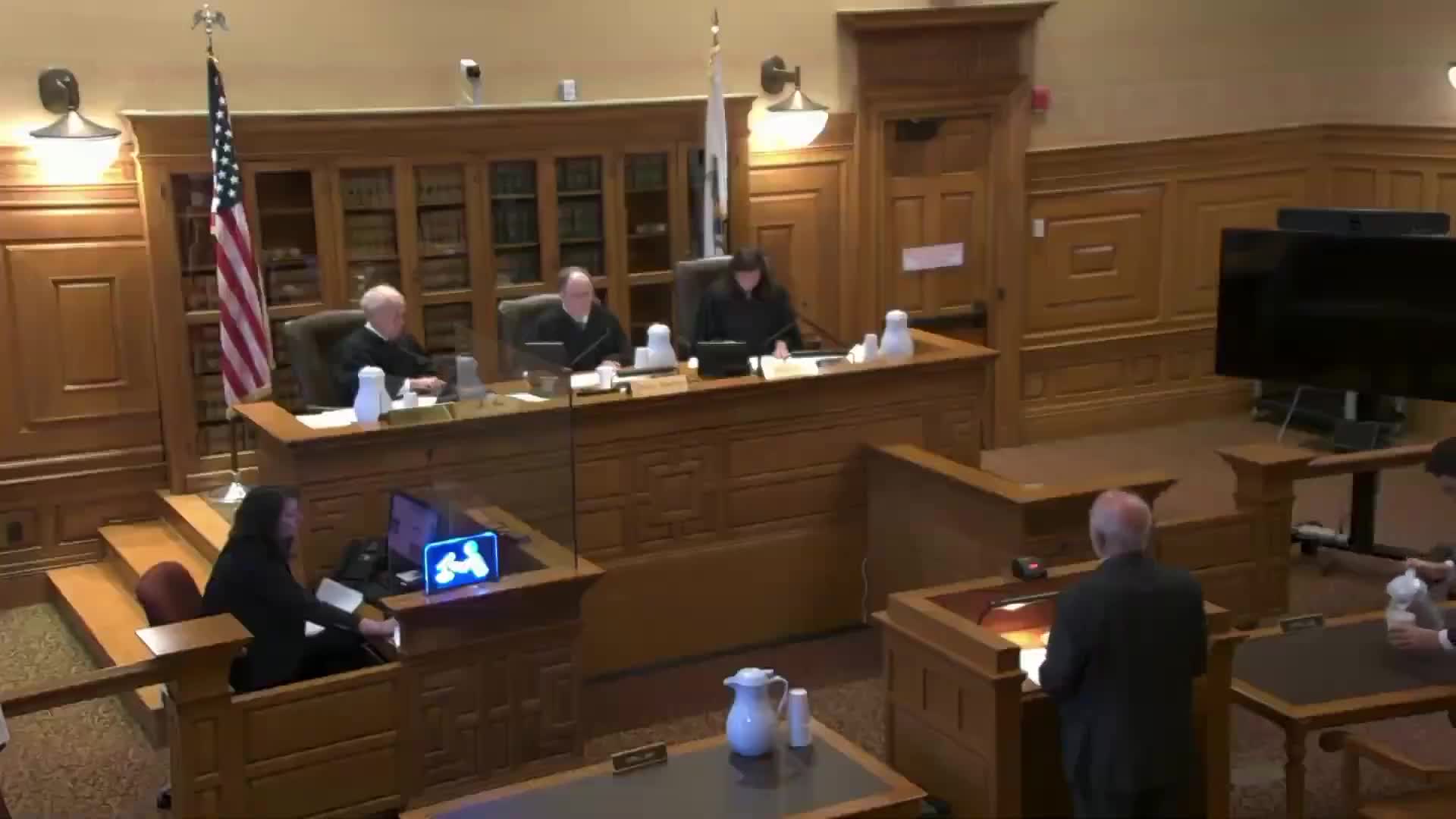Appeals court hears challenge to evidence and use of 20-year recidivism projections in Romanoff commitment appeal
October 04, 2025 | Judicial - Appeals Court Oral Arguments, Judicial, Massachusetts
This article was created by AI summarizing key points discussed. AI makes mistakes, so for full details and context, please refer to the video of the full meeting. Please report any errors so we can fix them. Report an error »

The Massachusetts Appeals Court heard argument Oct. 3 in Commonwealth v. Mark Romanoff, a post-conviction commitment-style appeal in which the appellant challenged evidentiary rulings related to release planning documents and long-term actuarial recidivism projections.
Appellant's counsel Frederick Bartman told the panel that excluding a written release plan created an imbalance because qualified examiners referenced the plan in their reports and the jurors were left without the underlying document when weighing dangerousness. "The qualified examiner's report itself made reference to the release plan, and they made reference to it in a negative way," Bartman said. He urged the court to read the statutes and rules to avoid a trial-level evidence gap.
Bartman also attacked the admission of "20-year projected rates" of reoffending. He said the five- and 10-year observational rates undergirding tools such as the Static-99R are empirical, but that projecting to 20 years is a statistical extrapolation that peer-reviewed authors caution should not be misused. "Twenty-year rates are neither observational nor rooted in the same empirical basis as five- and 10-year rates," he said; he argued their admission risked misleading the jury.
The Commonwealth's attorney Jesse Crane said the trial court did not abuse discretion when it excluded the written plan but allowed the social worker to testify to its substance, and that the record shows the jury heard the plan's practical effect. On the 20-year figures, the Commonwealth argued the defense never pursued a Daubert/Lanigan reliability hearing at trial and therefore waived the scientific-reliability challenge on appeal. Crane said the examiners also explained the limitations of actuarial tools to the jury.
The panel questioned whether the contested materials were properly preserved for appeal and whether the trier of fact could reasonably weigh actuarial projections alongside dynamic clinical factors. Both sides acknowledged experts had testified on the limitations of actuarial tools and on how age factors into recidivism projections; the Commonwealth noted the respondent was in his late 60s at trial.
The case was submitted after oral argument; no opinion issued at the hearing.
Why it matters: The appeal raises evidence-law and expert-evidence issues in dangerousness proceedings, including how courts should treat written release plans that examiners reference and the admissibility and use of long-term actuarial projections when jurors must predict future risk.
Appellant's counsel Frederick Bartman told the panel that excluding a written release plan created an imbalance because qualified examiners referenced the plan in their reports and the jurors were left without the underlying document when weighing dangerousness. "The qualified examiner's report itself made reference to the release plan, and they made reference to it in a negative way," Bartman said. He urged the court to read the statutes and rules to avoid a trial-level evidence gap.
Bartman also attacked the admission of "20-year projected rates" of reoffending. He said the five- and 10-year observational rates undergirding tools such as the Static-99R are empirical, but that projecting to 20 years is a statistical extrapolation that peer-reviewed authors caution should not be misused. "Twenty-year rates are neither observational nor rooted in the same empirical basis as five- and 10-year rates," he said; he argued their admission risked misleading the jury.
The Commonwealth's attorney Jesse Crane said the trial court did not abuse discretion when it excluded the written plan but allowed the social worker to testify to its substance, and that the record shows the jury heard the plan's practical effect. On the 20-year figures, the Commonwealth argued the defense never pursued a Daubert/Lanigan reliability hearing at trial and therefore waived the scientific-reliability challenge on appeal. Crane said the examiners also explained the limitations of actuarial tools to the jury.
The panel questioned whether the contested materials were properly preserved for appeal and whether the trier of fact could reasonably weigh actuarial projections alongside dynamic clinical factors. Both sides acknowledged experts had testified on the limitations of actuarial tools and on how age factors into recidivism projections; the Commonwealth noted the respondent was in his late 60s at trial.
The case was submitted after oral argument; no opinion issued at the hearing.
Why it matters: The appeal raises evidence-law and expert-evidence issues in dangerousness proceedings, including how courts should treat written release plans that examiners reference and the admissibility and use of long-term actuarial projections when jurors must predict future risk.
View full meeting
This article is based on a recent meeting—watch the full video and explore the complete transcript for deeper insights into the discussion.
View full meeting
